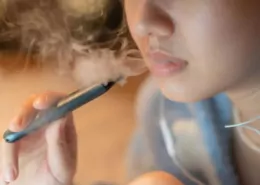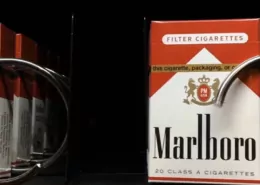Study Reveals Vaping Around Children Exposes Them to Significantly Less Nicotine Than Secondhand Smoking
A groundbreaking study conducted by researchers at University College London (UCL) and the SPECTRUM Consortium has shed new light on the impact of vaping around children compared to secondhand smoking. The findings, published in JAMA Network Open, suggest that children absorb far less nicotine from people vaping around them indoors than they do from secondhand smoking. This research has significant implications for the ongoing debate surrounding the potential risks of passive vaping and the regulation of vaping in public spaces.
Methodology and Findings
The study analyzed blood samples from 1,777 children aged 3-11 in the United States, categorizing them into three groups based on interviews with their parents or guardians: those exposed to secondhand smoke only, those exposed to secondhand vapor only, and those exposed to neither. The researchers measured concentrations of serum cotinine, a well-established marker of recent nicotine absorption, in the blood samples.
The results showed that nicotine absorption was highest among children exposed to secondhand smoke only, followed by those exposed to secondhand vapor only. Remarkably, the difference between these two groups was much more significant than the difference between the vapor-exposure group and the no-exposure group. Compared to children exposed to secondhand smoke, nicotine absorption was 83.6% lower in those exposed to secondhand vapor and 96.7% lower in those exposed to neither.
Implications for Public Health and Vaping Regulations
The study’s lead author, Dr. Harry Tattan-Birch, emphasized the real-world significance of these findings, stating that “nicotine absorption is much lower from secondhand vapor than from secondhand smoking.” He further explained that while nicotine itself is of limited risk, it serves as an indicator of the highest possible exposure to other substances present in vapor, which are likely to be substantially lower.
The research has important implications for the debate surrounding vaping regulations, particularly in countries like the United Kingdom, where a significant portion of the adult population has switched from smoking to vaping. Dr. Tattan-Birch noted that the results suggest there isn’t the same impetus to ban vaping indoors on health grounds alone as there was for smoking.
Expert Opinions and Recommendations
While the study authors acknowledge that secondhand vapor still exposes children to more harmful substances than no exposure at all, they emphasize that the risks are minimal compared to secondhand smoking. Professor Lion Shahab, one of the study’s authors, stated that while it is best to avoid indoor vaping around children, smoking “should be avoided at all costs.”
Other experts in the field, such as Dr. Peter Hajek from Queen Mary University of London, go further, stating that “‘passive vaping’ is unlikely to pose any health risks.” Dr. Roberto Sussman from the National Autonomous University of Mexico has also previously explained how exhaled vaping aerosol rapidly evaporates and disperses, and how particulate matter from air pollution is a far more valid concern.
Conclusion
This groundbreaking study provides valuable insights into the relative risks of secondhand vapor exposure compared to secondhand smoke, particularly for children. While it is still advisable to avoid vaping around children, the findings suggest that the concerns surrounding passive vaping may be somewhat overstated. As countries continue to grapple with the regulation of vaping products, this research offers an important perspective on the potential health impacts of secondhand vapor exposure and the need for evidence-based policies that prioritize public health.
- Vaping Laws in New Mexico: Guide of Age, Flavors, Tax & Rules - June 28, 2025
- Vaping Laws in New Hampshire: A Comprehensive Guide for You - June 27, 2025
- Paraguay Approves Bill to Regulate Vapes with Low Tax Rate - June 27, 2025








